Debrah's Blog
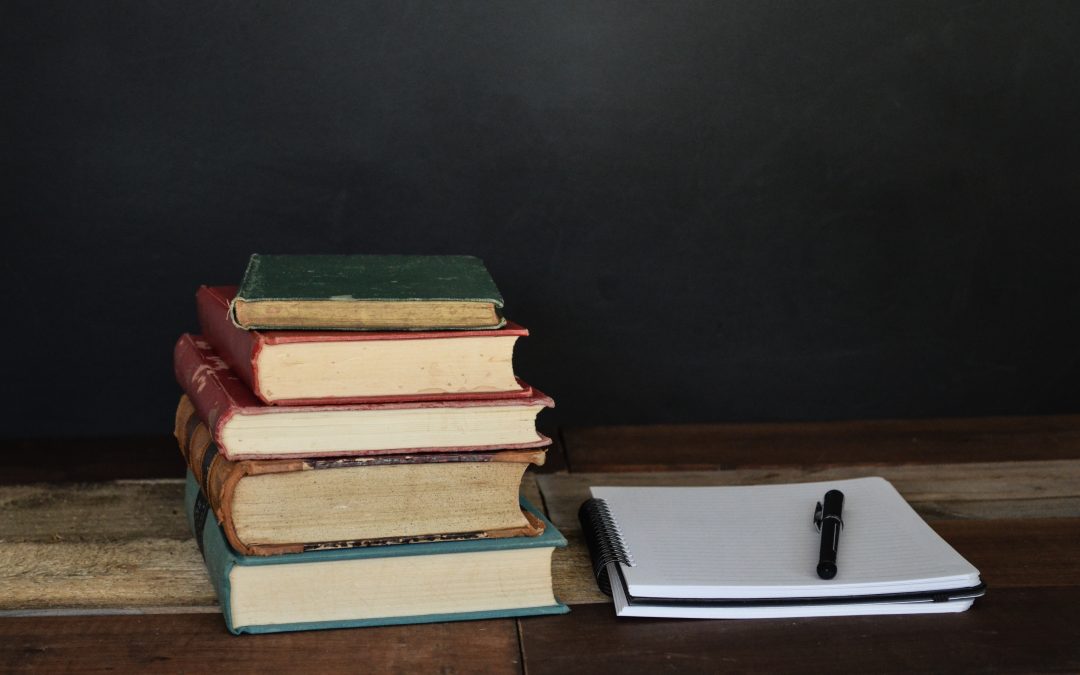
As Facts Remain Under Attack, Holocaust Education is Perhaps More Important Than Ever
Examining the past offers more than just a retrospective glimpse into the events that created today’s world. When we study historically prolific periods, we gain a stark illustration of the many sides of humanity — and an opportunity to do better than those who came before us.
Holocaust education is one of the most significant studies of historical human behavior. Not only does it magnify the irreparable consequence of genocide, but of the toxic mindset of racial prejudice and othering. It reveals the shocking potential of human behavior by shedding light on a terrible time in history and, in doing so, highlights the role each of us plays in upholding ethical responsibility through civil engagement.
While the importance of Holocaust education has never diminished, it is especially important now as a model for preserving facts, defending the integrity of those affected by historic tragedies, and learning from the past to improve the future.
In an age where misinformation spreads like wildfire and experts are second-guessed, worldwide citizens are left to their own devices, quite literally, to filter through the nonsense. Even historically held facts, including those about the Holocaust, have come under attack via tactics like gaslighting, demonstrating the disturbing effect that unchecked disinformation can have on the truth.
Misinformation or general misconceptions about the Holocaust can be extremely harmful and lead to intentional distortion and even Holocaust denial. Add to that the widening generational divide (between Holocaust survivors and new generations) and information digitization, and we find a perfect storm that easily distorts the truth and the important lessons contained within.
Why does it matter so much that the truth is upheld, left unsullied by prevailing prejudice? Why is it so crucial to preserving the memories, recollections, and documentations of those terrible acts? In short, Holocaust education is vital to the survival of humanity.
Taking a look at the missteps of the past offers a roadmap, a what-not-do type of manual. Educating both adults and children on the truths of this historical atrocity not only grants due respect to its eleven million-plus victims, but it also ensures that such history is not repeated.
By arming our citizens with historically accurate information around the Holocaust, we reveal more about the consequences of cruelty, dehumanization, and gross abuse of power. We offer learners the opportunity to reflect on their roles as global citizens, to step in and stand up for what is right, to support their fellow man, and oppose tyranny and hate.
Holocaust education allows us a glimpse into a troubled past to create a more peaceful future. According to UNESCO, “It proposes topics and activities that can help develop students to be informed and critically literate; socially connected, respectful of diversity; and ethically responsible and engaged.”
Factual Holocaust education can nurture a more positive attitude toward human rights and encourage civic engagement. In addition to illuminating our obligations as global citizens, proper education helps to strengthen critical thinking and enhances media and information literacy, reducing the destructive powers of misinformation and disinformation.
In modern society, Nazi comparisons are often made against various governments or individuals, demonstrating a clear lack of understanding of the gravity of that period in history. However, we can juxtapose current events and context alongside those of the Holocaust, when relevant, to convey the global scope and teachings of those events. Examining connections in immigration, refuge, and transit, for example, can help create more effective humanitarian solutions.
Winston Churchill wrote, “Those that fail to learn from history are doomed to repeat it.” It is crucial that now, more so than any other time following World War II, we are able to take a close and accurate look at the civil division and inaction that led to such great tragedy. In a time where truth is labeled fiction and lies are sold as facts, we can (and must) uphold the irrefutable honesty of the past to ensure the survival of free and just societies.
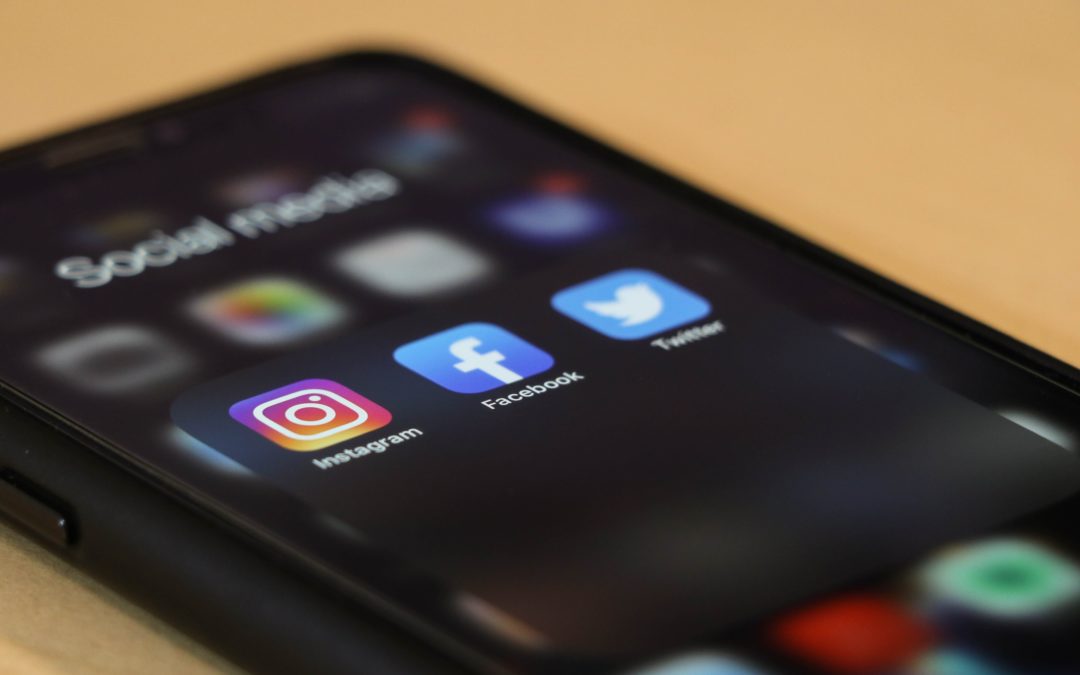
Social Media Platforms Need to Stand Up Against Holocaust Denialism
Over the last several years, a rising tide of misinformation and fake news has brought one essential truth to the forefront — that our society must make a concerted effort to champion history if we are to avoid repeating the mistakes of the past. And yet, awareness of history seems to be in short supply, particularly among younger generations.
Earlier this month, the Conference on Jewish Material Claims Against Germany (Claims Conference) released its first-ever 50-state survey on Holocaust knowledge among Millennials and Gen Z. The report revealed an alarming lack of knowledge and awareness of history; according to its research, a full 63 percent of all respondents did not know that six million Jews were murdered, and 36 percent believed that two million or fewer lost their lives. Nearly half (48 percent) could not name even one of the over 40,000 camps and ghettos that imprisoned Jews during the Holocaust.
The most frightening statistic, though, is this — 11 percent of U.S. Millennial and Gen Z respondents believe that Jews caused the Holocaust. While they may be forged in ignorance and not malice, these mistaken beliefs nevertheless undermine the lessons the Holocaust taught us about the damage hatred can wreak.
Worrying, too, is that the number of people who were present during the Holocaust — those who could rebut the false narrative with their lived one — is dwindling. As of 2016, Time reports that only 100,000 of the Jews who lived in camps and ghettos or were hiding from Nazis during the Holocaust still lived to tell their stories. Given that the youngest among them would have been 71 years old at the time of the count, it’s fair to assume that the cohort is likely smaller now.
To Gideon Taylor, the President of the Conference on Jewish Material Claims Against Germany, the declining number of survivors gives us another reason to prioritize Holocaust education and historical preservation.
“The [survey] results are both shocking and saddening and they underscore why we must act now while Holocaust survivors are still with us to voice their stories,” Taylor shared in a press release. “We need to understand why we aren’t doing better in educating a younger generation about the Holocaust and the lessons of the past. This needs to serve as a wake-up call to us all, and as a road map of where government officials need to act.”
We should start, he suggests, with social media.
According to the Conference’s survey results, 49 percent of U.S. Millennials and Gen Z have seen Holocaust denial or distortion posts either on social media or elsewhere only. A full third of respondents nationally reported that they had seen Nazi symbols on their social media platforms or in their community.
In mid-July, the Claims Conference utilized its new awareness of the misinformation problem to drive the #NoDenyingIt campaign — a concerted push against Holocaust denial on Facebook.
“Holocaust survivors have a simple message for Mark Zuckerberg: Holocaust denial IS hate speech and needs to be removed from Facebook! There is no denying their suffering and loss; there is no denying the Holocaust,” organizers wrote on the campaign’s page.
For the last several months, the Claims Conference has reinforced its assertions with action by creating, posting, and sharing videos that feature survivors’ voices and explain why Holocaust denial is hate speech. “The Holocaust ended 75 years ago,” campaign organizers shared in their call to action. “There is no denying it happened – there are witnesses. Please share their videos; Facebook needs to remove Holocaust denial from Facebook!”
Their efforts resulted in a resounding success. In mid-October, Facebook representatives announced that the company would be updating its hate speech policy to include Holocaust denial. It’s a promising step in what will undoubtedly be a years-long battle against Holocaust denial and distortion on and beyond social media. We must stand strong and remember survivor’s stories — for their sake, for society, and for the good of a rising generation.

COVID-19 Won’t Stop the School of Interactive Arts from Playing for Keeps
All around the country, concern over the pandemic has compelled schools to reconcile their educational efforts with social distancing best practices. Teachers in my home of New York City have done a phenomenal job of both preserving students’ passion for learning and cultivating creativity even amid resoundingly stressful circumstances. It would be impossible to highlight all of their achievements in a single blog; however, I do want to put the determination and spirit of one of NYC’s most creative academic programs into the spotlight.
The School of Interactive Arts — colloquially known by students and faculty as SIA — is a pre-college program founded by the Urban Arts Partnership. The program took root out of a belief that the game development sector was rife with opportunity and lacking workforce diversity. SIA, organizers felt, could help address both points by teaching creative high school students the art and science of game development.
The SIA curriculum is an expansive, multi-year offering that supports students through their high school years. As its organizers explain on the school’s website, SIA “uses game design as an entry point to teach computer science and higher level coding while helping students develop pre-professional skills in communication, collaboration, project management, and entrepreneurship.” To accomplish this directive, SIA offers courses on visual arts, music, game-writing, and programming in addition to SAT prep, college advising services, portfolio assistance, and Kickstarter support.
Currently, SIA draws students from over 45 high schools across New York City and New Jersey, many of which receive Title 1 funding. The program’s alumni have collectively earned $1.2 million in scholarships, seen a 100 percent college matriculation rate, and a 200-point average improvement to their SAT scores. Students also make, on average, $1,700 by selling the games they create.
“I feel like I’m finally in a space where I can express my interest in video games,” SIA alumna Sarah shared in a testimonial. “I’ve met a lot of really good people here and made a ton of friends, people I really connect with. I feel like that’s one of the best things about SIA.”
Each year, SIA holds an arcade to showcase their projects. Typically, the event takes place in an in-person venue — however, pandemic concerns compelled organizers to shift to a virtual format. In mid-April, students and faculty members alike took to the game streaming platform Twitch to share their work.
“Despite operating in a virtual environment, our students shined as they showcased the projects they worked on over the course of the year,” one organizer shared, noting that the stream featured SIA students’ “amazing achievements in game design, collaboration, and computer science.”
It is undeniably inspiring to see students continue to seek creative achievement despite the stresses of the pandemic. The SIA and the Urban Arts Partnership are doing fantastic work, and we wish them the best in the coming months.
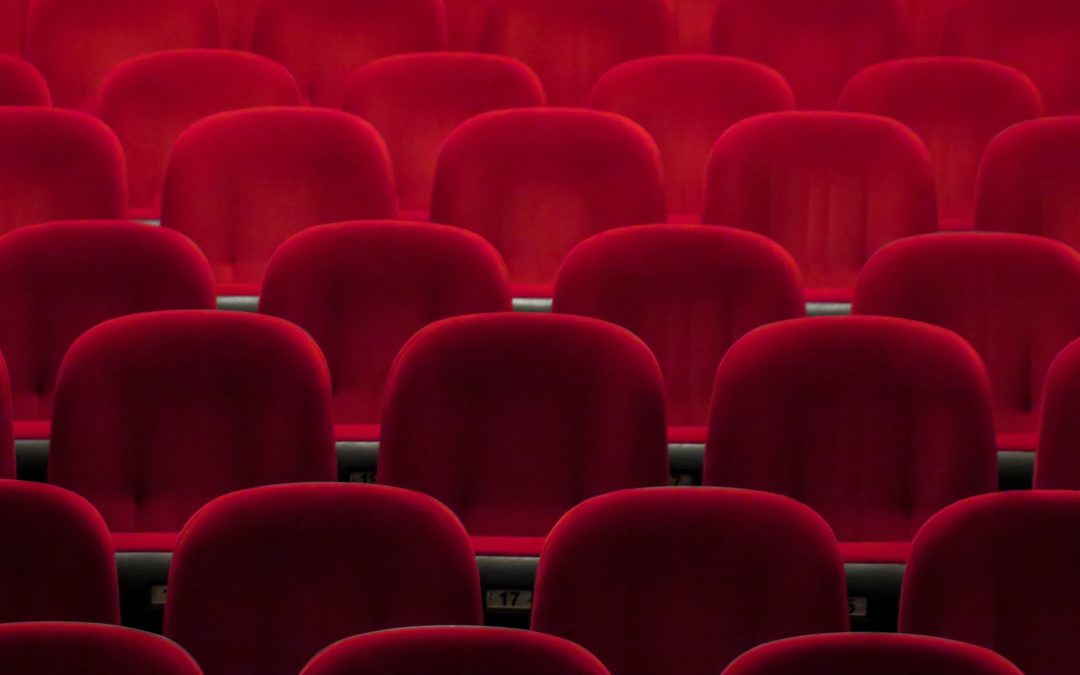
USHMM’s Chicago Fundraiser Wages a (Virtual) Fight Against Hatred
Never has it been more important to take warning from the past.
In recent years, ultranationalistic ideology has risen into mainstream politics, lending false credence to racist rhetoric and discriminatory action. America has become a nation embroiled in hateful and divisive sentiments that seem eerily similar to those swept through Germany in the 1930s and 1940s. Those who have studied the lessons of the Holocaust know that America now stands at a pivotal point in its cultural history — and that we need to learn from the past if we want to move towards a future where all can live in freedom, safety, and peace.
It is with that imperative in mind that the United States Holocaust Memorial Museum planned its 2020 Risa K. Lambert “What You Do Matters” Virtual Chicago Event. As the event’s organizers asserted on the event’s page, “Together, we will renew our pledge to ensure that the critical lessons of the Holocaust—lessons about the fragility of freedom, the nature of hate, and the consequences of indifference—help shape the way forward.”
In ordinary years, the Chicago-based event would be the museum’s largest national event, gathering over 2,000 in-person attendees. However, in light of the global pandemic, the USHMM has opted to hold a virtual event; over 1,500 people registered to participate. The organizers chose to adapt the event to a digital format because they believed the country needed its lessons of tolerance and warnings against hate.
“The pandemic is adding fuel to existing hatred,” R. Derek Black, the fundraiser’s keynote speaker, told the Daily Herald. “Educational responses to counter hate, teaching critical lessons of Holocaust history and the importance of human solidarity is so important right now.”
Black brought a unique perspective to his digital podium. Once known as the heir apparent to the Ku Klux Klan and the originator of the first white supremacy website, Stormfront, the scholar famously renounced the racist philosophies he was raised in after attending college and forging friendships with people of the same groups he once maligned.
“We look at the challenges this country faces. Nobody is a better spokesperson than [Black] who has been on both sides of this issue,” Jill Weinberg, the museum’s Midwest regional director, told reporters. “No other community should ever suffer the way the victims of the Holocaust suffered.”
The event also honored Mally Zoberman-Rutkoff, the daughter of two Holocaust survivors. Zoberman-Rutkoff is also known for her work as an activist; she served as the first chair of Chicago’s Children of Survivors group and launched the National Children of Survivors trips to Washington D.C.
“Mally has exhibited extraordinary leadership for the Museum and throughout the community,” the museum notes in its event listing.
Beyond Black’s keynote speech, the Risa K. Lambert “What You Do Matters” Virtual Chicago Event awarded Zoberman-Rutkoff with the museum’s National Leadership Award and featured celebrities (Gal Gadot, Jason Alexander, Jamie Lee Curtis) reading excerpts from the museum’s collection of Holocaust victims’ diaries.
The efforts of all those involved in making the United States Holocaust Memorial Museum’s first large-scale virtual event a success during this unprecedented time are worthy of recognition and gratitude.

Bike4Chai Takes Off in New Jersey
A global pandemic won’t check Chai Lifeline’s determination to raise money for children in need.
On August 13th, Bike4Chai’s 11th annual fundraising ride kicked off in Vernon, New Jersey. The course’s two-day, 120-mile route traced through winding hills and breathtaking scenery in Pennsylvania, New York, and New Jersey, both beginning and ending in Vernon. Riders also had the option of taking on abbreviated — but still ambitious — 90- or 100-mile courses if they so chose. Each biker must raise at least $5,000 to qualify for the trip.
Why take on such a daunting ride? Every rider who commits to the Bike4Chai challenge does so with the intent of raising money for Camp Simcha, a two-week summer program that provides an opportunity for children who struggle with severe or chronic illness to enjoy a brief reprieve from the anxieties and pain of their everyday lives. As the nonprofit itself describes, “A summer in Camp Simcha is an extraordinary opportunity for hundreds of children to restore their fighting spirit and renew their determination to defeat illness and suffering.”
In typical years, triumphant riders cross the finish line in Vernon and enjoy an afternoon of celebration at Camp Simcha’s Glen Spey location. With the current need for social distancing, however, those plans were necessarily altered. This year, riders had staggered start and finish times to allow for proper distancing. After landing, they enjoyed lunch and entertainment at a site across the street from Camp Simcha to facilitate a safe celebration.
This year’s Bike4Chai event followed Tour de Simcha, the nonprofit’s ride equivalent for women. The women’s Tour was initially slated for July but was canceled due to concern over COVID-19 risks. Not to be deterred, the event’s organizers rescheduled the event for August 4th, taking additional steps to protect Tour de Simcha’s riders.
The philanthropic spirit that Chai Lifeline’s organizers and supporters have demonstrated this year is remarkable — but not, given the Chai community’s strength, all that unexpected. As one event organizer remarked in a comment on the nonprofit’s website, “Though everything looks different these days, the heart and spirit of Bike4Chai remain unchanged – and stronger than ever.”
The first Bike4Chai event kicked off in 2009, when Chai volunteer Dovid Egert decided to combine his love for biking with his passion for Chai’s cause. Riding alone, Egert embarked on a revolutionary, 135-mile ride from his home in Lakewood, New Jersey, to Camp Simcha. By the time he crossed the finish line in Glen Spey, he had raised $10,000 in donations for campers. From that year onward, a tradition took root — hundreds of riders flock annually to Vernon to raise money for Camp Simcha.
This year, over 500 people signed up to Bike4Chai and ultimately raised a whopping $5.5 million for Camp Simcha.
It is inspiring to see that Chai Lifeline’s determination to support children in need persists, even amidst the hardships and anxieties posed by COVID-19.
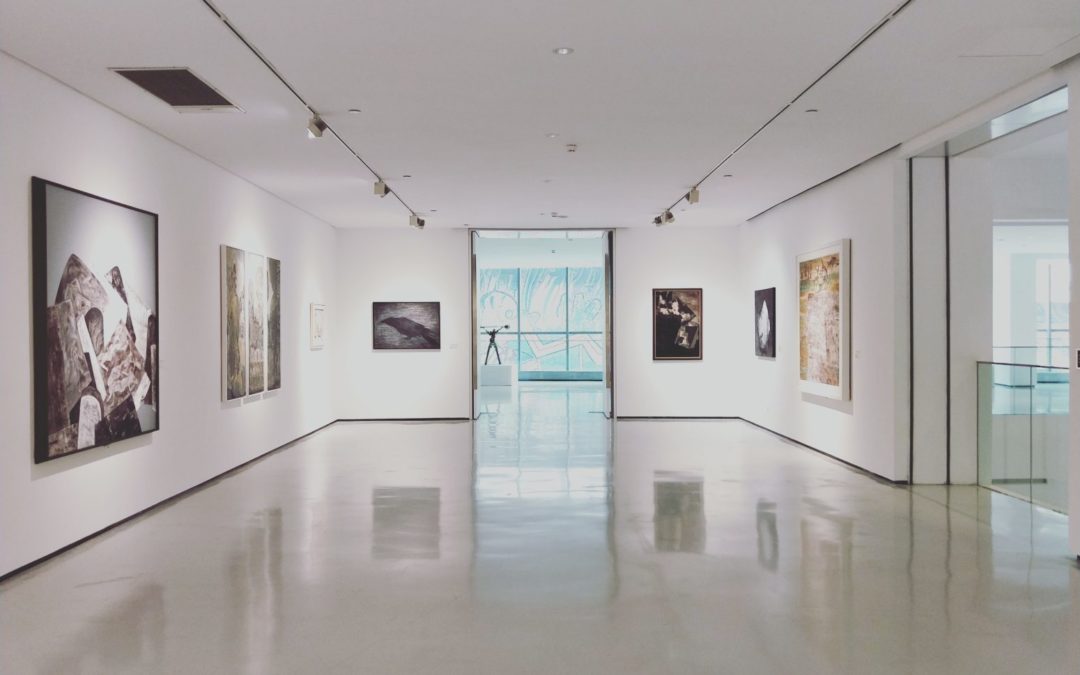
Navigating Ethics in Art and History Is A Necessary Challenge
Navigating the realization that something you treasure is a spoil of war is, at first, uncomfortable. Then, when you delve into context, it becomes outright horrifying.
This article was originally published on ThriveGlobal
In mid-February, the Metropolitan Museum of Art announced that it would be investigating the ownership and history of an oil painting that hangs in Gallery 634. The 17th-century work in question portrays the rape of Tamar in the Old Testament — and at first, no one at the Met thought anything of it, aside from some uncertainty over which ancient story is depicted.
The museum had bought the piece at auction in December of 1983. At the time of sale, the auction catalog noted the painting as a portrayal of “Tarquin and Lucretia” and listed it only as “the property of a gentleman.” Curators later wrote that the painting had “no known provenance prior to its appearance at auction at Christie’s, London, 2 December 1983.”
Of course, the painting did have a history — and, though the museum curators wouldn’t have known it at the time — the story of that “unknown gentleman’s” loss and attempted reclamation of the painting was far more traumatic than the artwork’s innocuous gallery label ever suggested.
The gentleman’s name, before it was wiped from the painting’s ownership record, was Sigfried Aram. A Jewish art dealer living in pre-WWII Germany, Aram was forced to sell his home — with the painting inside — to a German businessman for a mere fraction of its worth in 1933. Faced with a rising tide of Nazism, Aram gave up his protests and fled Germany. For years following, the art collector struggled to reclaim his painting, insisting that the buyer had taken advantage of the anti-Jewish hatred of the time to force him to capitulate on an unfair deal. Despite countless court battles, his efforts never succeeded.
Aram’s struggles to take back the stolen painting were painstakingly compiled by Joachim Peter, a researcher and photographer who has dedicated years to studying the treatment of Jews in Aram’s former home of Heilbronn. It was Peter’s findings that launched a New York Times story on the art dealer’s failed quest to reclaim his property and ultimately sparked the Met’s investigation into the painting’s history.
The museum’s investigation offers justice that is over four decades too late for Aram, who passed on in 1978 without leaving family behind. There is no catharsis here, no returning the portrait to its actual owners in an attempt, however late, to make matters right. All the Met could do — and did as of February 26th — is adjust the painting’s wall label to note Aram’s ownership.
It is worth noting that the Met does (now) have strict policies in place to navigate the complexities of addressing potentially stolen art. The museum’s guidelines mandate that curators should thoroughly examine the acquisition of works that were likely to have been in German-occupied Europe between the years of 1933 and 1935 and, if necessary, take the necessary steps to make certain that the transaction is fair and respectful.
But still, the museum’s solution that feels underwhelming in the face of Aram’s loss and the context of the Holocaust. Aram’s painting stands as a reminder of all the other treasured possessions that were stolen, destroyed, or commandeered during the Holocaust. We crave a solution that makes us feel as though that loss has been acknowledged, recognized, and even in a small way, restituted. And yet, for many, there is no such sense of closure.
The frustration that underpins Aram’s story is an issue that goes beyond the museum, the painting, or even Aram. As New York Times journalist Graham Bowley writes in his investigation of the matter, “As much as the story of the painting is a question of ownership, it is also a vivid illustration of how much less equipped and attentive the world once was on the issue of art lost during the Nazi era.”
During the abuses of the Nazi regime, untold thousands of personal belongings and treasures were taken from European Jews without any payment. Returning them should be as simple as saying “that doesn’t belong to you” — but returning those artifacts to their rightful owners is a more complicated process. What do we do if the “rightful owners” were killed in the genocide and their families forced to flee their homeland for safer ground? How do we acknowledge the crime when, as with Aram, there are no descendants to whom we can return those treasures?
These are questions that matter. Even if restitution only means changing a line on a three-by-five gallery card four decades after the fact to reflect true ownership, it should be taken — because that recognition matters. Otherwise, the trauma of the original theft is (even inadvertently) accepted, that first crime forgotten.
Sometimes, those crimes are even compounded. In 2016, the UK-based Commission for Looted Art in Europe (CLAE) announced its findings that after the Monuments Men returned Nazi-stolen art to the German government on the condition that the victims’ families be restituted for their loss, the artworks were instead given back to the Nazis who stole them. In other cases, the government simply kept the art; state-owned museums in Munich reportedly profited from Nazi-looted art until the mid-1990s.
The horror of the 2016 disclosure hammers home the fact that the issue of returning Nazi-stolen art wasn’t solved in the decade following WWII. It’s still a problem today — and will likely continue to be a concern that museum curators, collectors, and governments will need to be mindful of in the future.
That said, there are some hopeful stories. In January, DW News reported that the Leverkusen-based company Bayer AG returned an Oskar Moll painting that had been stolen during the war and owned by Bayer since 1951 to the descendants of the painting’s Jewish owners. Only a day later, Germany’s Federal Commissioner for Culture and Media made a similar return of three Nazi-looted artworks to the heirs of their rightful owners.
These ceremonial returns offer the kind of closure that we lack in Aram’s case. We want to feel that the tables have been righted, recompense given, justice restored. But the Met’s current investigation leaves visitors with no catharsis, no sense of rightness, no sense of real justice. It would feel better if whoever had benefitted from the sale had donated the money to the Holocaust Museum in Washington or given directly to help remaining Holocaust survivors.
But Aram’s failed quest for his painting reminds us of why we still strive to return Nazi-looted art. The edited lines on his painting’s gallery card remind us that there is still work to be done, amends to be made, and losses to be memorialized — and that it is all worth doing, even if no descendant is left to see the effort. We need to keep acknowledging and righting crimes committed during the Holocaust because if we don’t — if we turn a blind eye to past abuses to benefit ourselves — we recast our cherished possessions, once more, into the spoils of war.

Chai Lifeline Welcomes its First Companion Robot in Canada
We’ve seen therapy cats, dogs, horses and now — robots?
Earlier this year, Chai Lifeline announced that it would be launching Zenbo, a companion robot, to help Toronto-area children stay spirited in the face of illness and isolation. This cheerful bot was programmed by the Faculty of Business and Information Technology at Ontario Tech to provide specialized support, entertainment, and educational opportunities to sick children. According to a report from the Globe and Mail, the pilot project will last six months and connect several families with Zenbo tech.
Organizers for Chai Lifeline have made no secret of their excitement for the innovative initiative, noting that given the severe impact that loneliness and isolation can have on a patient — and particularly a child — the day-to-day social support that Zenbo stands to offer is significant.
“This is an opportunity for us to give a child a friend who can’t get that child sick,” Mordechai Rothman, Chai Lifeline Canada’s executive director, told a reporter for the Canadian Jewish News. “It doesn’t come with any germs, and it’s a companion to play with.”
The robot’s supportive capabilities align neatly with Chai Lifeline’s driving mission: to provide emotional, social, and financial support to families living with severe pediatric illness and loss.
Over the past two-plus decades, the nonprofit has developed far beyond its roots as a summer-camp program to become one of the foremost international health support networks. Chai Lifeline reports that between 2017 and 2018 alone, it helped 5,552 children and families, delivered 79,271 meals, and offered 354 workshops in schools, camps, and communities. Now, the nonprofit hopes that Zenbo will empower the organization to provide a new level of meaningful support to families in their day-to-day lives.
That hope seems well-positioned for success. While Zenbo wasn’t explicitly designed for Chai Lifeline, it was conceptualized as a companion. The Taiwanese technology giant Asus launched the AI-powered robot in 2016 with the intention of bringing an empathetic, supportive, and fully automated presence to mass-market consumers.
“For decades, humans have dreamed of owning such a companion: one that is smart, dear to our hearts, and always at our disposal,” ASUS chairman Jonney Shih told reporters for the Guardian. “Our ambition is to enable robotic computing for every household.”
The project’s empathetic intentions make Zenbot an ideal prototype for Chai Lifeline. The robot is already approachable, with a pleasant oval face, round body, and large eyes. It is also capable of interacting with humans — it can recognize faces, navigate in-room obstacles, remember conversational details, and even engage in basic empathetic discussion.
In fact, Miguel Martin, the leading professor for Ontario Tech’s partnership with Chai Lifeline, told Canadian Jewish News that the pursuit of empathy was a significant area of focus for his team.
“One of the things we are working on is creating artificial empathy, so the robot gets to empathize with the human, learn their moods based on the vocals and body language,” Martin said. “Even by the choice of words, they should know how the human is feeling and then try and help the human in the best possible way.”
If the pilot program for Chai Lifeline’s friendly robot succeeds in providing support to the children and families who need it the most, Zenbos may just become a staple presence in hospitals and households. After all — for a family struggling to navigate pediatric illness, even a little help can go a long way.
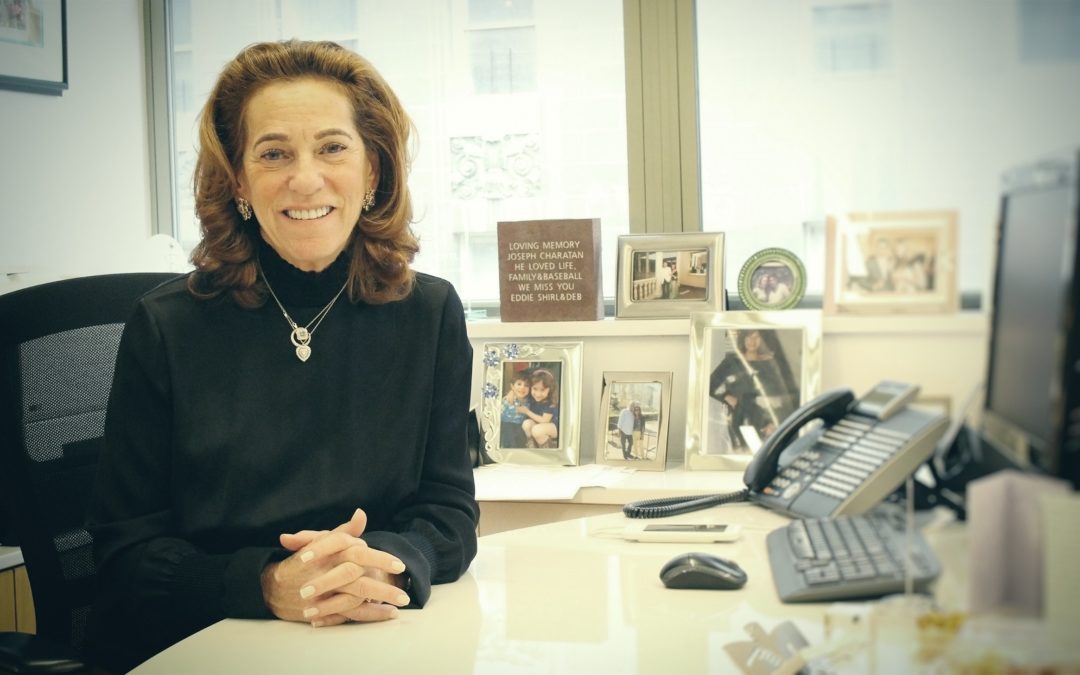
How Debrah Lee Charatan Made Family History a Philanthropic Legacy
This article, by Gillian Wood, was originally published on Medium.
Ask a philanthropist why they started giving, and you’ll usually find that they have a story to tell. In Debrah Lee Charatan’s case, that story isn’t hers, but her parents’.
Charatan, a real estate expert and NYC-based entrepreneur, is no stranger to nonprofit work. She is the founder of the Charatan Family Foundation, which provides support to art, cultural, medical, and other humanitarian causes in the greater New York City area. She also stands on the Metropolitan Museum of Art’s Real Estate Council. Over the years, Charatan’s generosity has extended to a plethora of causes, including the Rainforest Foundation, the Friendship Circle, the United States Holocaust Memorial Museum, Park East Synagogue, Chabad of Southampton, and the Jewish Museum.
Debrah Lee Charatan’s philanthropic efforts are diverse — and yet, one cause stands above the rest in her giving history: remembering and supporting those impacted by the Holocaust.
While Charatan herself grew up in Queens, New York, her parents were born in Europe. Both managed to survive the horrors of the Holocaust, but ultimately lost their homes, family members, and sense of security. The pair met in Munich after the war ended; they married and immigrated to New York City in 1949. Though her parents rarely reflected on their experiences during the Holocaust, the genocide cast a shadow over Charatan’s family history. She came to be both acutely aware of her heritage and motivated to honor survivors like her parents.
In addition to providing financial support to the organizations mentioned above, Debrah Lee Charatan also serves as the vice-chair of the board of trustees for the Selfhelp Community Services Organization, a senior care nonprofit that provides care to Holocaust survivors and others in need. Currently, the organization cares for well over 4,500 elderly and frail individuals.
As Selfhelp describes its mission on its website, “Selfhelp’s services for Holocaust survivors honor the sacred pledge made by our founders: to serve as the last surviving relative to victims of Nazi persecution. This promise remains our imperative. Our overarching goal is to provide Holocaust survivors with the services they need so that they may live with the comfort and dignity they so richly deserve.”
Selfhelp’s directives matter to Charatan because she has seen firsthand how difficult it can be for seniors to navigate their sunset years without the support of long-established family networks. She has stood with the organization for years, offering business guidance and financial support.
Last September, Selfhelp honored Debrah Lee Charatan with the opportunity to name one of the organization’s newest buildings after her parents. The dedication was incredibly meaningful to her.
“Dedicating this building seemed like the perfect way to honor the memory of my parents,” Charatan shared during the opening ceremony for the building. “For these residents, this place is a castle, just as our small apartment was to my parents. It is a home — one where people who live together care about one another and can share the daily joys of life.”
Debrah Lee Charatan’s philanthropic legacy will have a profound positive impact not only on the Holocaust survivors that Selfhelp serves but our society as a whole. Her work with historical organizations such as the Jewish Partisans Educational Foundation and the United States Holocaust Memorial Museum help preserve the harsh reality of the Holocaust for future generations.
“I have spent my life honoring the stories of those who lost their lives to the Holocaust,” Charatan reflected on her work in an article for Thrive Global. “I believe that sharing those experiences, accepting them, was the only way that we could avoid such tragedies in the future.”
As philanthropic legacies go, it’s certainly an honorable one.
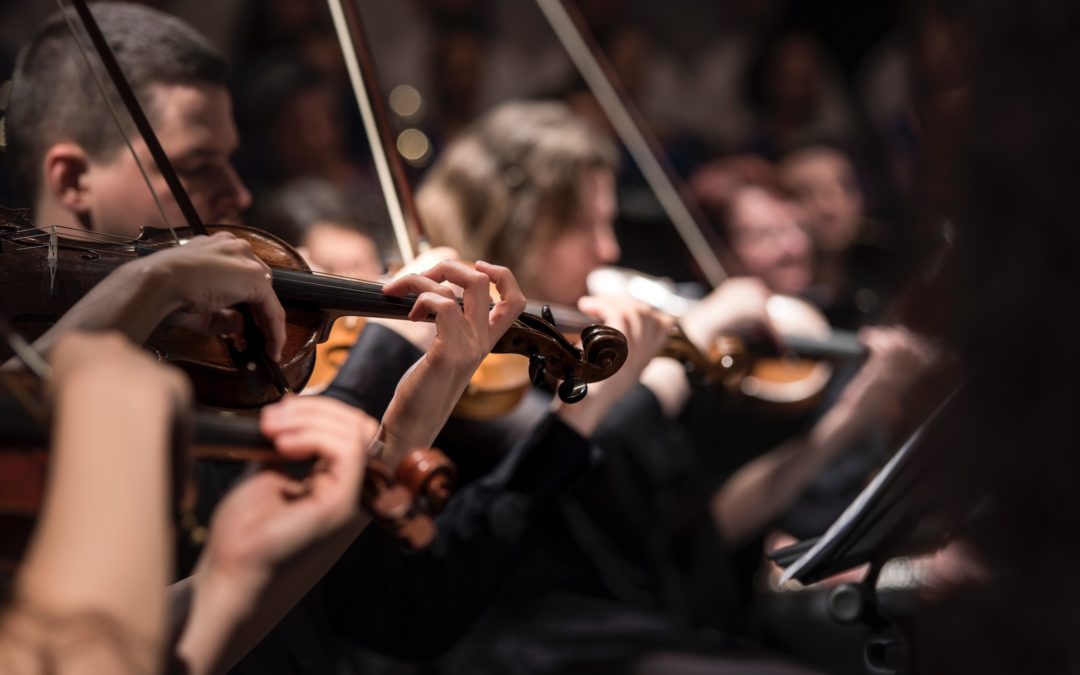
The Lincoln Center Announces A New Cohort of Emerging Artists
On November 13th, the Lincoln Center for Performing Arts officially announced the members of its Emerging Artists cohort for 2020. The annual class sources its members from the Lincoln Center’s 11 resident organizations and recognizes the incredible talent and potential that the rising stars bring to New York City’s artistic community. Over the past several decades, the Emerging Artist award has highlighted over a hundred promising artists from a broad span of disciplines. This year’s cohort includes singers, composers, dancers, musicians, and filmmakers alike — all of whom were individually nominated by the Lincoln Center’s artistic leadership.
The soon-to-be-awardees will receive their honors and an additional $7,500 in career development prize money at a gala, which will be held at Alice Tully Hall on Wednesday, February 26th. Many of the recipients will perform during the celebration, and all will be present during the festivities.
The celebration is more than a party for the Lincoln Center’s leadership. As Henry Timms, President and CEO of the Lincoln Center for the Performance Arts, commented for an article published in Broadway World, “The arts are fundamental to our world, and it is Lincoln Center’s responsibility to support the voices of diverse, fearless, and extraordinary artists.”
This year’s gala will be co-hosted by the Lincoln Center Awards’ current presenting sponsor, the Movado Group Foundation. The Foundation is the charitable arm of the eponymous American watchmaking firm. The organization provides considerable financial support to the Lincoln Center’s artistic efforts and will additionally give each award recipient a Movado watch.
The Emerging Artist awards won’t be the only accolades delivered at the gala. Two recipients will also accept the Martin E. Segal Award, which has spotlighted two exceptionally talented rising artists every year since 1986. Another artist will receive the Hunt Family Award, which is traditionally awarded to the Lincoln Center for Performing Arts’ Emerging Artist nominee.
The upcoming gala has two intentions — first, to recognize the accomplishments of the Lincoln Center’s artistic community, and second, to celebrate the five decades that the organization has provided support to its 11 constituent organizations. The money raised from the event will go to support the emerging artists’ future productions, support new artistic programming, and allow the Lincoln Center to host free performances on its campus.
Tickets and sponsorship opportunities for the February 26th event are currently available on the Lincoln Center Corporate Fund’s website. These funding slots are available at several price points. Levels include the Friend Ticket ($1,500), the Award Underwriter ($7,500), the Supporter ($15,000), the Benefactor ($25,000), and the Gold Sponsor ($50,000). According to the Fund’s website, over 450 corporate organizations currently enjoy the benefits of sponsorship. These include but are not limited to: “use of Lincoln Center’s premiere ticketing concierge service; invitations to donor events and open rehearsals; listing in the Annual Report, website, and all Lincoln Center Playbills.”
The gala will undoubtedly be something to look forward to — both for the celebration itself, and what it represents for New York’s artistic community.
Below, find a full list of the 2020 Award recipients and their nominating organizations.
Lileana Blain-Cruz
Lincoln Center Theater
Stella Chen
The Juilliard School
Tessa Clark
Lincoln Center for the Performing Arts
Hunt Family Award
Emily D’Angelo
The Metropolitan Opera
Ruby Lister
School of American Ballet
Martin E. Segal Award
Sebastian Manz
Chamber Music Society of Lincoln Center
Riley Mulherkar
Jazz at Lincoln Center
Martin E. Segal Award
Akosua Adoma Owusu
Film at Lincoln Center
Unity Phelan
New York City Ballet
Ellen Reid
New York Philharmonic
Jennifer Ashley Tepper
New York Public Library for the Performing Arts

Americans and the Holocaust Exhibit Receives National Tour
In the first week of October, the United States Holocaust Memorial Museum (USHMM) and the American Library Association (ALM) released a list of the fifty libraries selected to host a touring version of the USHMM’s Americans and the Holocaust exhibition, which will make its first stop in early 2020 and continue its travels for two years.
The published list is the culmination of months of careful consideration from both organizations. During the program’s two-month application period, more than 250 libraries from across the country vied for the tour’s 50 available spots. The review process was thorough; all applicants underwent a competitive and peer-reviewed process which, according to a press release from the ALM, “considered community demographics, library outreach plans, and the availability of other Holocaust-related educational opportunities in the library’s region, among other factors.”
The interest in the touring program — and the care taken in determining its hosts — makes sense, given that the traveling exhibit is based on one of USHMM’s most compelling exhibitions. Also titled Americans and the Holocaust, the original display opened in 2018 and marked the museum’s 25th anniversary. As the name suggests, Americans and the Holocaust explores fears and factors that influenced Americans’ reactions to both Nazism and the oppression and murder of European Jews during the 1930s and ’40s. It also wholly dispels the myth that Americans were unaware of the persecution Jews faced during the time.
The exhibition asked: “What did the US government and the American people know about the threats posed by Nazi Germany? What responses were possible? And when?”
“Visitors will be surprised at how much Americans knew about Nazism and the Holocaust and how early they knew it,” curator Daniel Greene shared in a press release about the original exhibition. “The exhibition also shows what else was on Americans’ minds as they learned about these threats, from great economic insecurity to the isolationist sentiment in the wake of World War I and national security fears during World War II.”
The goal, Green says, is to compel visitors to think about the events of the time without the benefit — or reassurance — of hindsight. The experience is often thought-provoking, if at times heart-wrenching. As museum director Sara J. Bloomfield describes, “Americans and the Holocaust will challenge visitors to think about both the missed opportunities to save lives and the impact of those few individuals who took action.”
Or, to quote the museum’s explanation of the exhibition’s research and message, “The United States alone could not have prevented the Holocaust, but more could have been done to save some of the six million Jews who were killed.”
It’s a brutally direct truth — and one that some libraries feel perfectly-oriented to share.
“Libraries are vital centers for lifelong learning, convening, and conversation, and they are the perfect venues to host this important and powerful exhibition,” ALA president Wanda Brown asserted in a recent press release.
In this way, the ALA is helping further the exhibitions’ fundamental purpose — to make us think not only about what was or wasn’t done in the past, but what could be done when tragedy rears its head in the future.
A full list of participating libraries can be found on the ALA’s website.